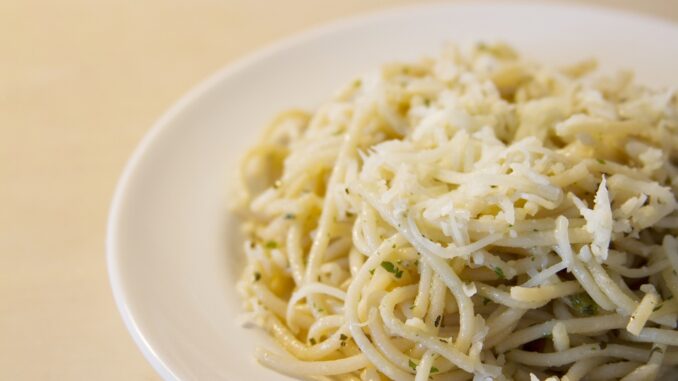
Introduction: Quinoa pasta is a popular gluten-free alternative to traditional wheat-based pasta, prized for its nutty flavor, tender texture, and nutritional benefits. When cooked properly, quinoa pasta can be just as delicious and satisfying as traditional pasta, with the added bonus of being rich in protein, fiber, and essential nutrients. In this comprehensive guide, we will explore the art of cooking quinoa pasta al dente, ensuring that you achieve the perfect balance of firmness and tenderness for a delightful dining experience.
Understanding Quinoa Pasta: Quinoa pasta is made from quinoa flour, which is derived from the seeds of the quinoa plant—a nutrient-rich pseudocereal native to South America. Quinoa is naturally gluten-free and is considered a complete protein, containing all nine essential amino acids. Quinoa pasta is a popular choice for individuals with gluten sensitivities or those looking to incorporate more whole grains into their diet.
Cooking Quinoa Pasta Al Dente: Cooking quinoa pasta al dente requires careful attention to timing and technique to achieve the perfect balance of firmness and tenderness. Here’s a step-by-step guide to cooking quinoa pasta al dente:
- Choose the Right Pot: Select a large pot with plenty of room to accommodate the pasta and water. Using a spacious pot helps prevent the pasta from sticking together and ensures even cooking.
- Boil Ample Water: Fill the pot with an ample amount of water—generally, you’ll need about 4-6 quarts of water per pound of pasta. Bringing the water to a rapid boil before adding the pasta helps prevent it from becoming gummy or sticky.
- Salt the Water: Add a generous amount of salt to the boiling water—about 1-2 tablespoons per gallon of water. Salting the water not only enhances the flavor of the pasta but also helps season it evenly from the inside out.
- Add the Pasta: Carefully add the quinoa pasta to the boiling water, stirring gently to prevent clumping. Be sure to follow the package instructions for the recommended cooking time, as different brands and varieties of quinoa pasta may require slightly different cooking times.
- Stir Occasionally: As the pasta cooks, stir it occasionally to prevent it from sticking to the bottom of the pot or clumping together. Using a long-handled spoon or pasta fork, gently stir the pasta in a circular motion to ensure even cooking.
- Test for Doneness: About 2-3 minutes before the recommended cooking time is up, start testing the pasta for doneness. Remove a piece of pasta from the pot and taste it to assess its texture. Quinoa pasta is best cooked al dente, which means it should be tender but still slightly firm to the bite.
- Drain Promptly: Once the pasta reaches the desired level of doneness, promptly remove the pot from the heat and drain the pasta in a colander or fine-mesh sieve. Avoid overcooking the pasta, as it can quickly become mushy and lose its desirable texture.
- Rinse (Optional): Some cooks prefer to rinse quinoa pasta under cold water after draining to stop the cooking process and prevent it from sticking together. However, rinsing is optional and may remove some of the starches that help sauces adhere to the pasta.
- Serve Immediately: Transfer the cooked quinoa pasta to a serving bowl or individual plates and top it with your favorite sauce, cheese, herbs, or vegetables. Quinoa pasta pairs well with a variety of sauces, including tomato-based marinara, creamy alfredo, or pesto.
Tips for Cooking Quinoa Pasta Al Dente: Here are some additional tips to help you achieve perfect al dente quinoa pasta every time:
- Use Adequate Water: Ensure that you use enough water to fully submerge the pasta and allow it to move freely during cooking. Insufficient water can cause the pasta to stick together and cook unevenly.
- Follow Package Instructions: Pay close attention to the package instructions for cooking quinoa pasta, as different brands and shapes may have varying cooking times. Start testing the pasta for doneness a few minutes before the recommended cooking time to avoid overcooking.
- Don’t Overcrowd the Pot: Cook the quinoa pasta in batches if necessary to prevent overcrowding the pot, which can lead to uneven cooking and clumping. Use a larger pot or divide the pasta into smaller portions to ensure even cooking.
- Check Frequently: Keep a close eye on the pasta as it cooks and test it for doneness regularly. Quinoa pasta can go from perfectly al dente to overcooked in a matter of minutes, so it’s essential to stay vigilant.
- Adjust Cooking Time: If you prefer your pasta slightly firmer or softer than al dente, adjust the cooking time accordingly. Keep in mind that quinoa pasta tends to cook faster than traditional wheat pasta, so be prepared to adjust the cooking time accordingly.
Conclusion: Cooking quinoa pasta al dente is a simple yet essential skill that allows you to enjoy the full flavor and texture of this nutritious and delicious alternative to traditional pasta. By following these tips and techniques, you can confidently cook quinoa pasta to perfection, achieving the ideal balance of firmness and tenderness for a satisfying dining experience. Whether you’re serving it with a classic marinara sauce, creamy alfredo, or vibrant pesto, al dente quinoa pasta is sure to elevate any meal and delight your taste buds with its nutty flavor and delicate texture. So grab your pot, boil some water, and get ready to savor the simple pleasure of perfectly cooked quinoa pasta al dente.